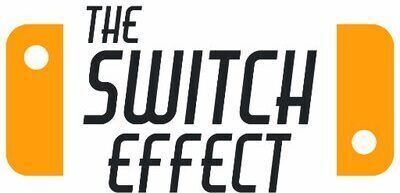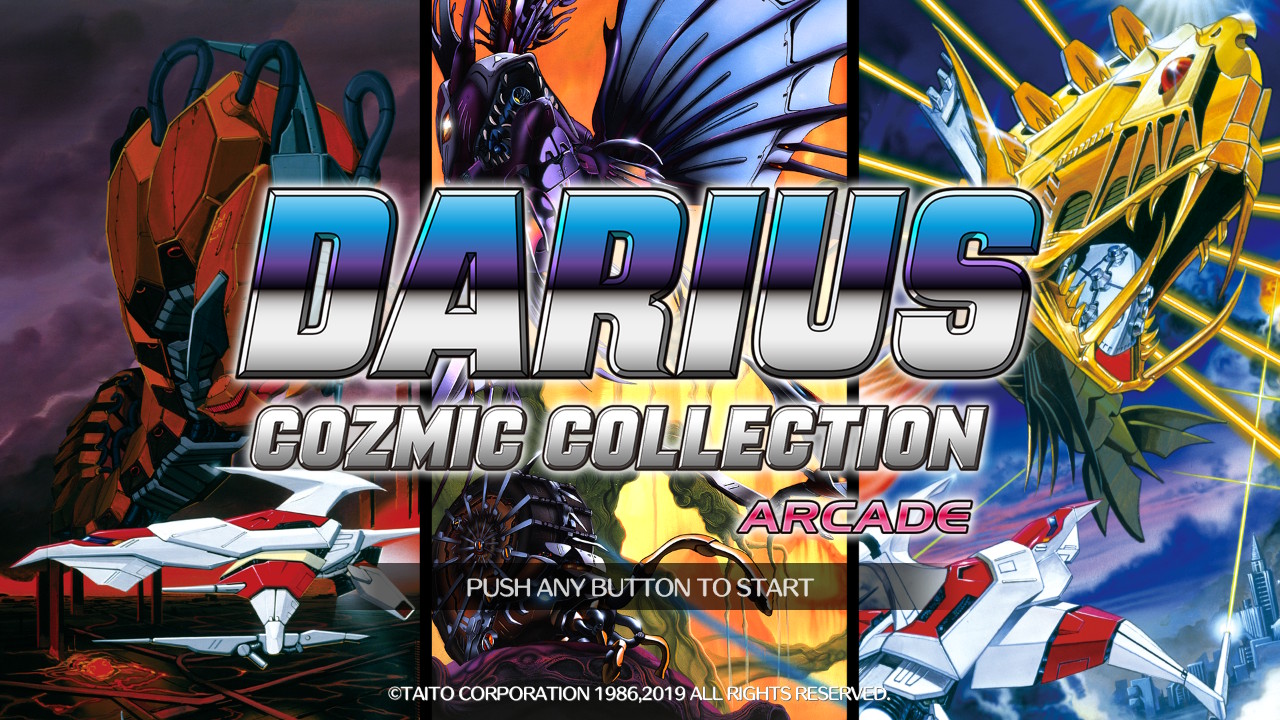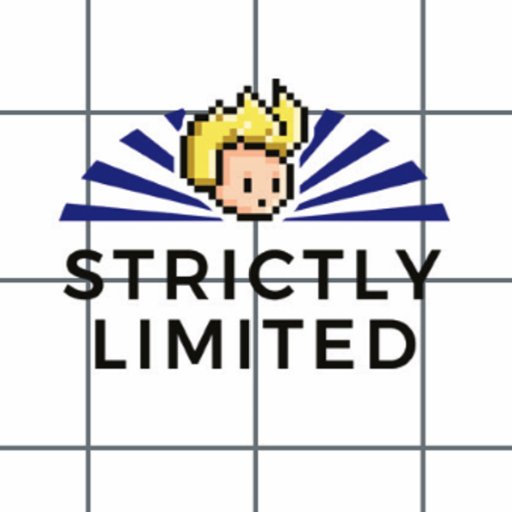Developer: Taito (original games), M2 (ports) Publisher: ININ Games (Digital), Strictly Limited Games (Physical) Catagories: Arcade, Shootemup, retro Release Date: 06.16.2020
In 2019, Taito would release Darius Cozmic Collection in Japan. This M2 developed compilation collects the first three Darius games released for arcades and their revisions. If one was to purchase the game’s much more expensive Special Edition however, they would also receive Darius games released for consoles ranging from the Sega Master System to the PC Engine. A year later, the games would get digital releases splitting the release into two separate, more affordable collections for the arcade and console games. This format was used for the collection’s western release.
A BIT OF HISTORY
Before getting into the collection proper, one should probably familiarize themselves with the series. Developed by Taito of old, Darius might best be known for it’s bosses. Most shoot-em-ups leave the bosses to be giant gets, aliens, monsters, Darius has bosses all themed off of aquatic life, all of them having their own unique names, with Fatty Glutton being one in particular. This was done to differentiate the series from other shooters at the time. Another notable aspect of the series is that it gives the player the choice at the end of each stage to chose a path to take for different stage and different bosses. These both are mainstays for the entire series, it’s identity if you will.
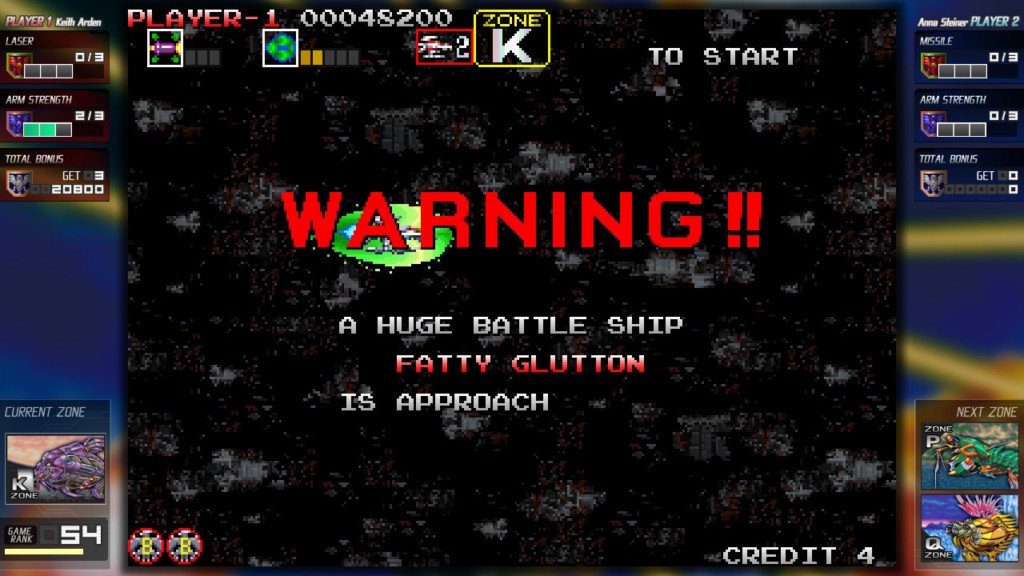
Darius Cozmic Collection Arcade Edition holds seven titles in it, Darius, Darius New Version, Darius Extra Version, Darius 2, Sagaia (Darius 2’s localization), the second revision of Darius 2, and Darius Gaiden. This means only three true games are included. If this is a problem, and for many people it will be, the collection is not for you. Instead, the the collection is aimed preserve these titles and their revisions, it’s the definition of a niche collection of games. There’s something truly admirable about going through the effort of putting together and showcasing how the arcade games slowly evolved, even if to a passerby, some of these revisions seem superfluous.
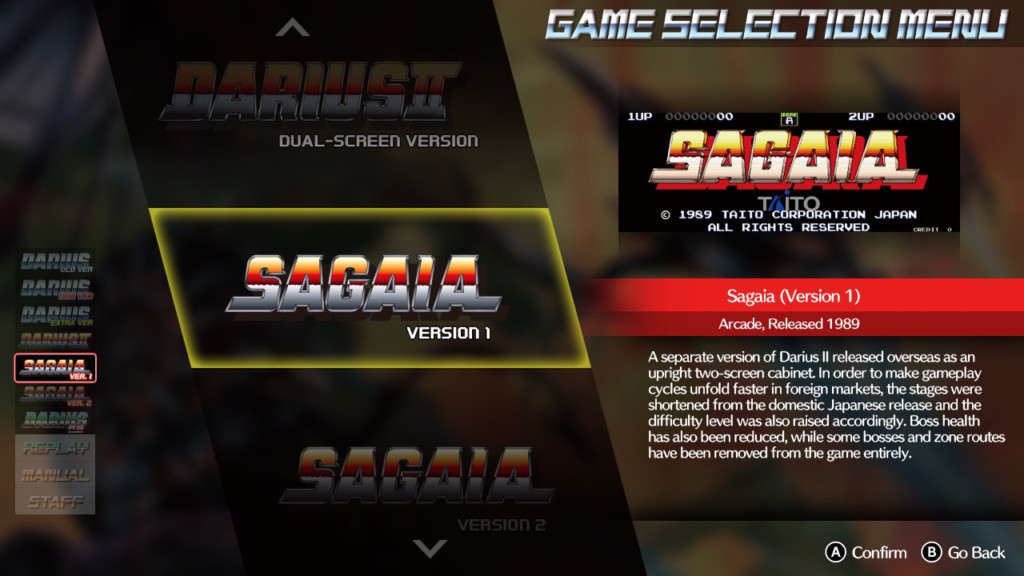
WHERE IT ALL BEGAN
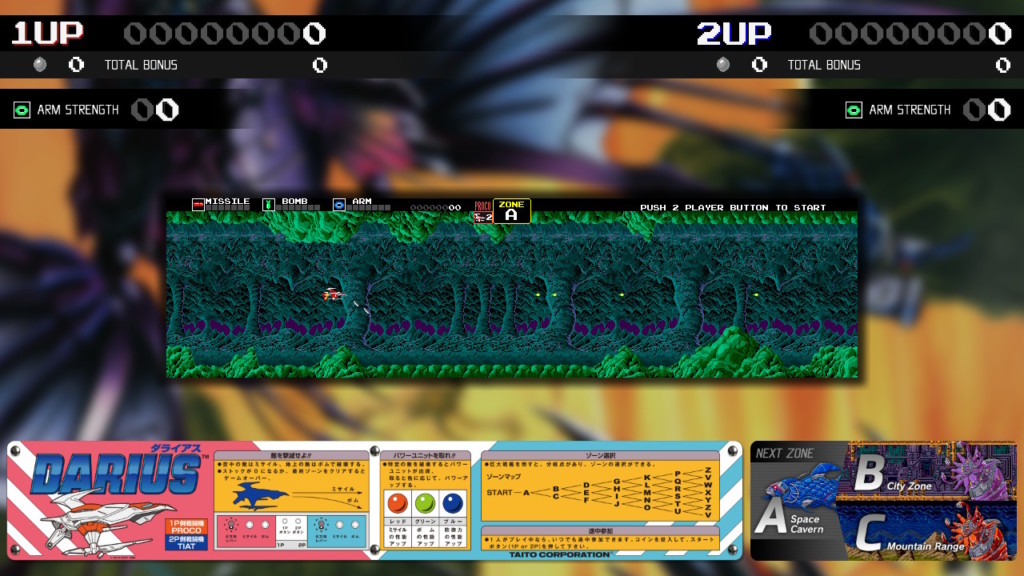
It all starts with Darius. This first game in the series is known in particular for having a three screen display, making for an ultra wide screen showcase. All three revisions of Darius in this collection are using the three screen display, which from a preservationist standpoint, is great. However, in practice, especially if you play your Switch exclusively in handheld mode, it’s hardly practical with the game being so small as to fit properly. As someone who is strongly against playing retro games in anything besides proper aspect ratio in these collections, if you’re not playing in Docked Mode, it might be in one’s best interest to do so if only not to squint. While this may be a quirk, it’s by no means a negative. Both New and Extra Version are both re-balance the difficulty with weapon strength and boss life. All this aside, Darius 1 is a fine start, if not a little bland in compared to it’s sequels. None of the game’s stages are that exciting with the bosses themselves being the game’s big showcase.
I’VE ALWAYS WANTED A THING CALLED TUNA SASHIMI
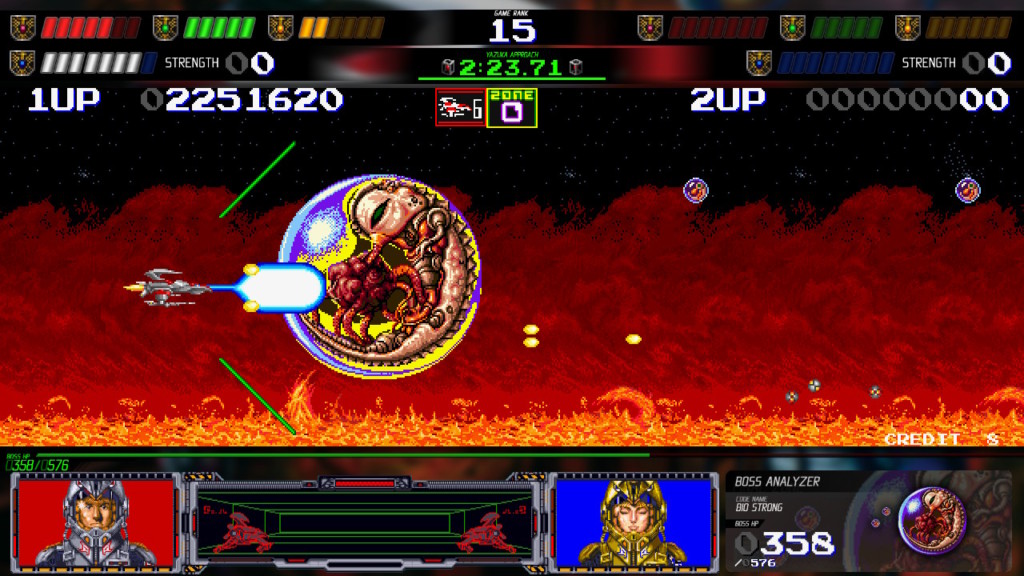
Darius 2 would release next, while a three screen version of the game does exist, it’s more commonly a two screen game, which is represented in Cozmic Collection. Darius 2 does what all sequels should do, it sticks to the core gameplay of the original and improves the surrounding elements. Off the bat, the stages are more interesting, with the first taking place on the Sun of all places. Darius 2 introduces optional mid-stage bosses as an obstacle, those of which being smaller versions of the first game’s bosses. If the first, Darius seemed a bit old for people, the sequel is a good starting point. When the game was brought over to the west, it was heavily localized and became what we know as Sagaia. Sagaia changes the level layout, including the first stage no longer being on the Sun, but now on Earth. Stages are also shorter and lesser in number to make the game a quicker play. Sagaia’s second revision changes stage layout AGAIN, with the first stage being on a destroyed city, resembling the Sun stage from Darius 2. Darius 2/Sagaia’s two screen setup plays quite a bit nicer and isn’t terribly small when played in Handheld Mode.
THIRD TIME’S THE CHARM
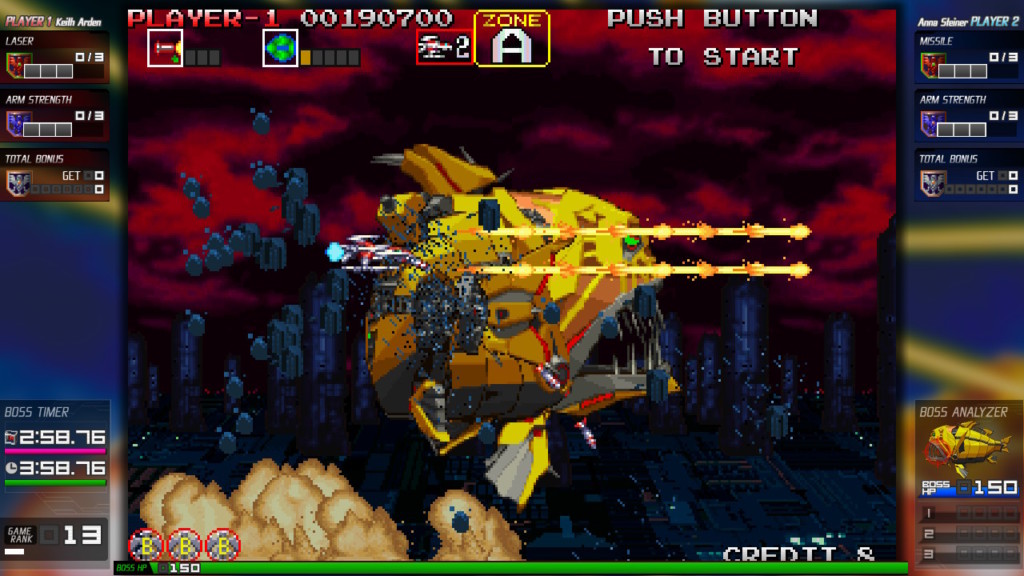
Darius Gaiden, coming five years after Darius 2 would be the third mainline game in the series and the last to employ use of sprites. If there is one game to play in this collection, it’s Gaiden. At the game’s release in 1994, spritework, especially in arcades was slowly becoming old-hat and seen as inferior, so games that would use them around this time would often have immaculate sprite work. Darius Gaiden is no different. Gone is the idea of using multiple screens for the game and instead, Gaiden uses a single screen, everything being closer and showcasing the beautiful sprite work. While music in the Darius games has always been good, Gaiden takes it a step beyond, going for a more eerie feel, the first stage’s vocal theme Visionnerz encapsulates this. Darius Gaiden doesn’t just improve with it’s music and graphics, but the gameplay is retooled as well. The mid-stage bosses introduced in Darius 2 return, but serve a grander purpose this time around. If the small orb is destroyed on them without destroying the machine itself, they become an option to assist you until destroyed by your opposition. Also introduce is a screen clearing Black Hole bomb, which when you’re surrounded by bullets, creates a really cool looking effect of them all swirling in. Perhaps it’s because of modern improvements, Darius Gaiden almost feels easier than the first two games, or rather more balanced. All three games often have moments of too much going on at once, but Gaiden gives you power to circumvent that.
“A” ZONE IS OVER
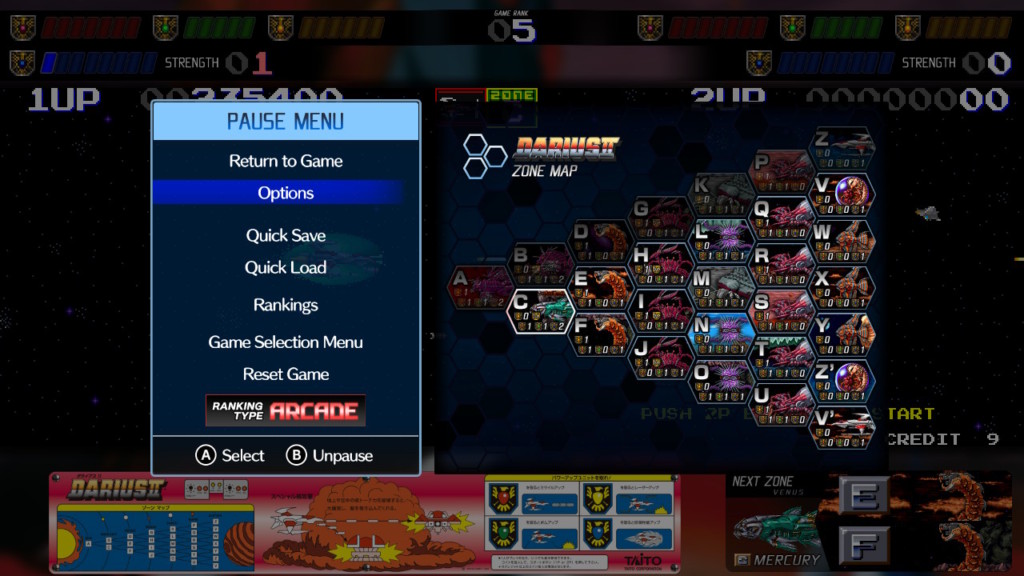
In terms of content besides the games, you’re not going to get much out Darius Cozmic Collection Arcade Edition. The meat of extras all come from how you can customize your experience. There’s rumble for the first game when you insert credits or when bosses appear, which is ultimately superficial, but a neat touch nonetheless. The games in the collection all come with overlays and displays that greatly enchance the experience with displays for your upgrade levels, which route you’re on, and even a display for how much HP a boss has or what phase they’re currently on. All games also have a practice mode that allow you to freely chose your level and upgrade count, making for a great beginner friendly addition for all of the games The commitment that M2 went through to make these additions elevates this collection over it’s competitors and even other compilations M2 has done and I would love to see this in future releases. The best part about any of these additions though, is that they’re all optional if one wants the more authentic experience.
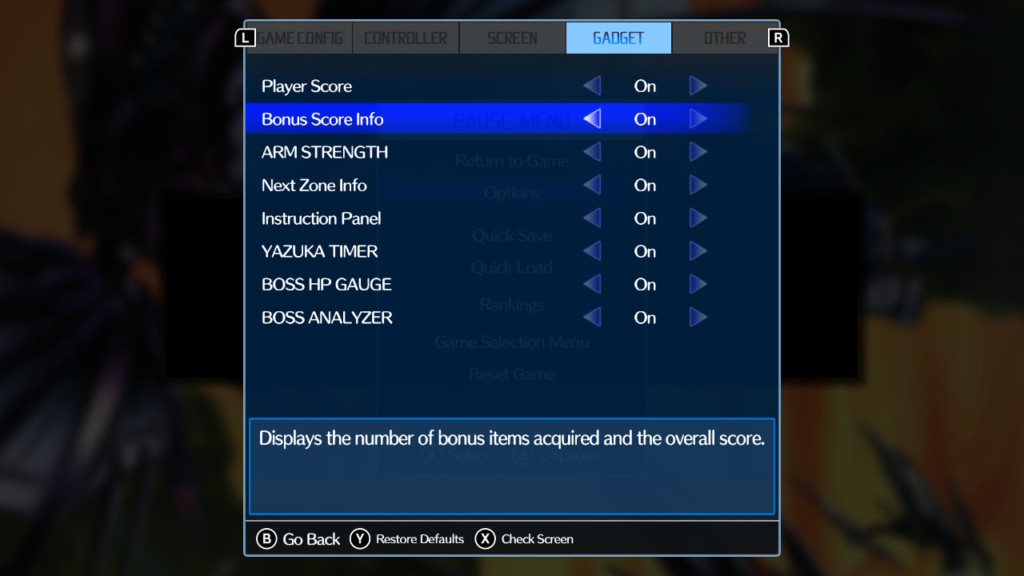
While I’m in the camp of thinking price is irrelevant when it comes to games if it’s of high enough quality, Darius Cozmic Collection Arcade Edition is not cheap. It has seven games, which four of which being revisions, not especially unique. If one was to purchase the game, because of price, it’d be advisable to buy a physical edition from Strictly Limited Games as opposed to a digital copy. While this in no way affects the game’s quality, it makes it a very hard sell to people outside of the shoot-em-up community or Darius fanbase, especially a digital release of a game only slightly cheaper.
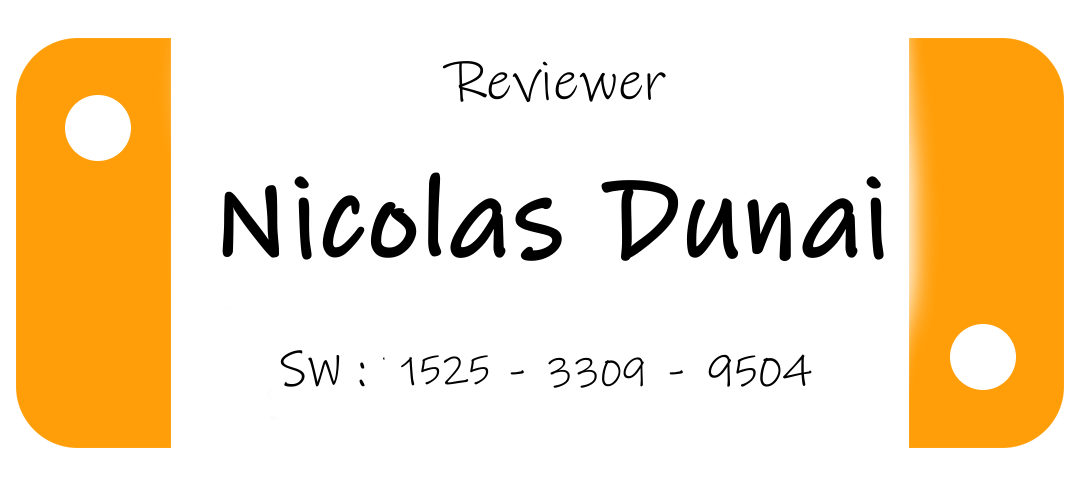
5/5
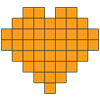




BUY NOW: $44.99 (Digital) €39.99 (Physical)
FOLLOW 
FOLLOW 
FOLLOW 
*Game Download Code provided for review purposes.
[Review] KONOSUBA – God’s Blessing on this Wonderful World! Love For These Clothes Of Desire! – Nintendo Switch

Developed By: MAGES. Inc. Published By: PQube Categories: Visual Novel…
